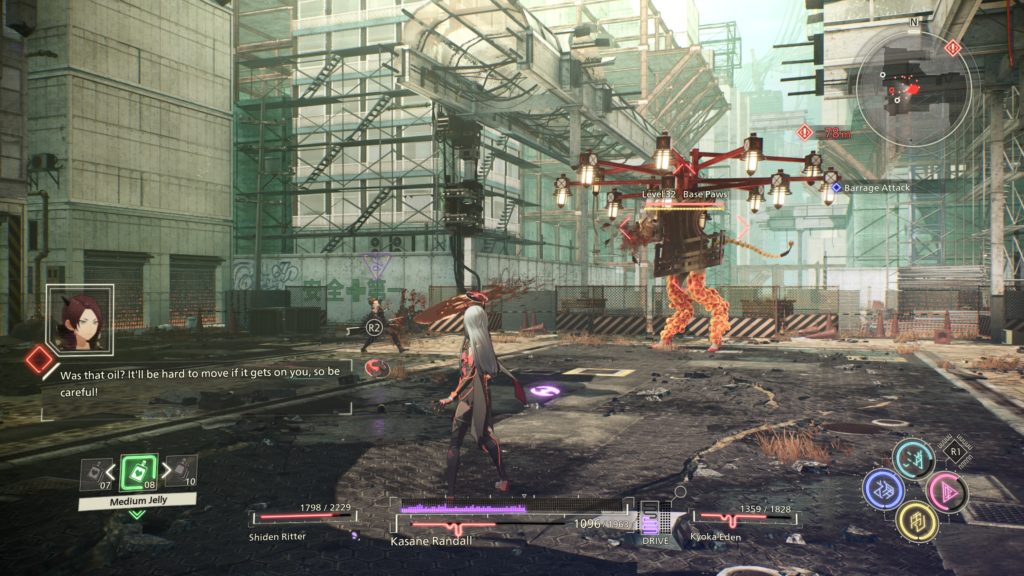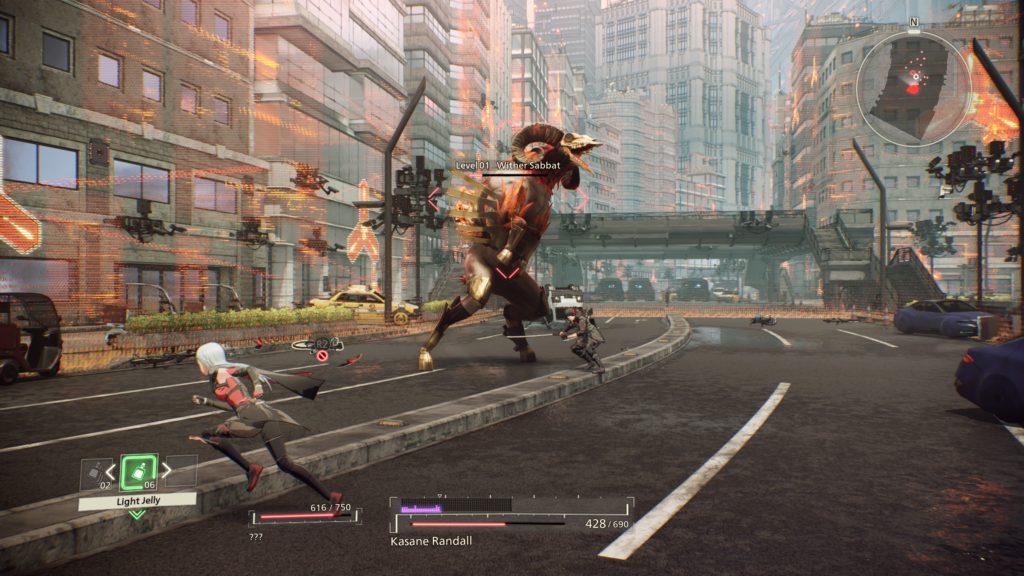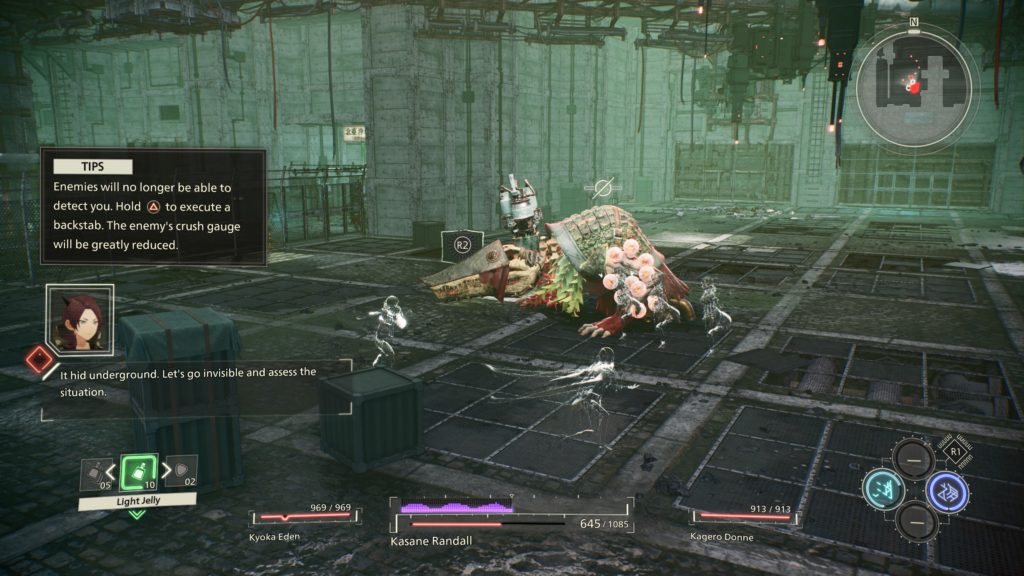- Genre: JRPG
- Platform: Switch
The praise that this one got when it came out really surprised me. It’s not that I necessarily thought the praise was wrong, but SMT games are a very specific kind of niche that I didn’t think would translate well across the board. I played a ton of SMT4 on the 3DS, but even then the formula of the overall metagame felt dated. 8 years later, SMT5 brings the same fantastic combat with the same outdated metagame, and it feels even worse to me now.
If there’s anything I would point to about the game, it’s that it’s not “hard”, at least not in the traditional sense. What it often is is difficult, but artificially so and I think that’s an important distinction. The game isn’t hard in a skill-based sense. Once you know the counters to a boss, the game is trivially easy since you can build your party as a hard counter to it. What it then becomes instead is hard in a time commitment perspective. You’re now just spending time making parties that are tailored towards fighting a specific boss, capturing and fusing demons that act as defensive counters to the boss’ big attacks to allow you to fight your way through it. Even by where my levels were in the mid 20s, this had just become a colossal slog. A single level was ending up being 25-30 fights, which is far too slow a pace to be interesting. Routinely getting into boss fights that then back you up to a ton of grinding is just no longer fun to me. That brings me to my kind of three strikes of shelving this one.
The first strike was just a straight death to trash. I get that there’s some amount of danger involved in any JRPG fight. I was in the middle of a 30 minute walk between save points and came into a rare fight where the enemy went first. It got off a crit, giving it an extra turn, then finished off the main character on the second attack. There was nothing I could do because the main character dying is an instant game over. I was never given a turn to heal up. I was never given a turn to take out the enemy. 100-0 before I could do anything. Against a boss where I’m prepared, this would just suck. Against a trash mob where I’ve been walking for along time and lose a ton of progress because of the main character death rule it’s infuriating. The main character death rule is one of those things that just has to go.
The second strike was around a couple of side quests. Some of them end with you going back to the quest giver and getting into fights. These generally involve a bunch of wandering around to some random quest giver away from any save point and doing chores, so when you get to one that involves a sudden unplanned boss fight and you haven’t been conserving resources, it’s not exactly a fun time. A couple of these I got through fine, a couple of these I was clearly underleveled or needed a different party for. Losing progress to a side quest is not great.
The final strike was just hitting another boss where I was going to have to redo my entire party to act as a hard counter, and I don’t really need to cover it more than that. I had gone through four rounds and only chipped the boss down by about 25% of its health. It then got to the point where it gained its turn with guaranteed crits, did an AoE, and 100-0’d half my party in one turn. It’s not great when you get to that point because it makes it clear that you need to both grind and rework the party to hard counter it. Guaranteed time waste.
I would almost sit here and wonder if JRPGs have left me behind. At this point I lack both the time and patience to really sit around playing grindy games that force me to increase numbers instead of giving me skill-based ways out of problems. Looking at some of my recent shelved games that certainly would seem to be the case – Scarlet Nexus and Bravely Default 2 particularly come to mind. On the other hand, I’m still finishing more JRPGs than not.
FF7R, NEO: The World Ends With You, Xenoblade Chronicles and Tales of Arise are more action focused, which gives players ways to simply skill through battle. However, they are distinctly JRPGs in their meta games. On the more traditional front Yakuza 7 was incredibly grindy but had a lot of fun stuff to do around it that kept me playing for the hell of the character interactions. Fantasian and Atelier Ryza both had pretty traditional JRPG meta games, but had much better overall flow and a far more compact leveling experience so you weren’t just fighting for the sake of padding out the game’s length. In all of those cases they didn’t waste the player’s time through old mechanics. They let individual fights speak for themselves, and if you died so be it, you didn’t lose progress and you picked up having learned some things to apply to it the second time. Given those, I don’t think SMT5 is that far away from actually being actually really fucking good.
For one thing, just fucking add checkpoints and auto saves before fights. Having to manually save at places far apart from each other is a bad mechanic. Losing a ton of progress because you died to some rando is a bad mechanic. It was bad in the 80s and it’s bad today. If a player dies, return them immediately to just before the fight. Secondly, get rid of the fucking grind. Is there any point to me having to do 25-30 fights to level up? Is it accomplishing anything? Is it proving anything about me as a player? If the grind is reduced, then making parties that are specific hard counters to bosses is less of a chore and actually becomes a fun part of the meta game. If you wanna be really frisky, use the mechanic that FF13/13-2 do and just heal the player between fights. Then your fights could all be hard and you could eliminate a ton of grind. Also, get rid of the MC death = game over. I don’t care if you have to story up some bullshit, but if I have a party of four things and one of them is an instant death, that feels dumb. Let the rest of my party finish the fight. Again, don’t waste my time.
So I guess at this point I’m left here not so much wondering if JRPGs have left me behind, but if the older studios are sticking too much to tradition. A lot of what I find boring about this game is just mechanics that have aged poorly that they’re sticking to for tradition. Studios that have broke away from tradition have been the ones that have done far better. FF7R completely turned that game on its head to great effect. Tales of Arise added a much more dodge/parry focused combat, reinvigorating what had largely become an attack spam battle system. Fantasian took a turn-based system to mobile and made positioning fun while reducing grind to make a compact experience. There’s a path here for traditional games like SMT5, but they need to look at what is causing their games to be 40+ hour slogs, because there isn’t 40 hours of content here. Cleaning those things up gives them a path to be more streamlined, more fun, and importantly actually more difficult, rather than just sticking to being a grind.





